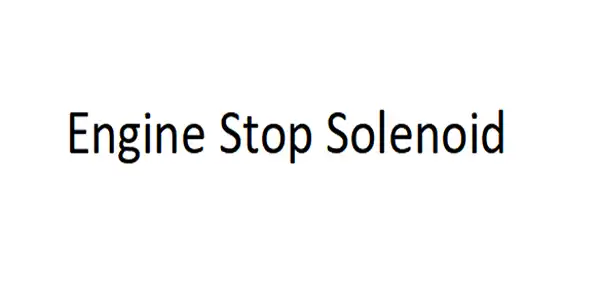Introduction of An Engine Stop Solenoid
The engine fuel system is a part of the vehicle that helps transfer fuel from the tank to the engine for combustion. As fuel delivery to the engine is essential for smooth driving; your fuel system must always be efficient. Engine fuel system parts include engine stop solenoid, fuel pump, gas cap, fuel injectors, fuel filter, pulsation damper, etc. Here you will learn more about an engine stop solenoid.
What is an engine stop solenoid?
An engine stop solenoid, which belongs to fuel system parts, is an electromagnetic device designed to cut the fuel supply to an engine to force it to stop. It is normally located at the entrance to the fuel injection pump or in the fuel line before the fuel injection pump. At a state of rest, the solenoid will have no power and need to be energized to allow the engine to run. Most mechanical engines are equipped with an engine stop solenoid.
How does an engine stop solenoid work?
There are two sets of electromagnetic coils in the engine stop solenoid, respectively the pull-in coil and the hold coil. The power of the pull-in coil is relatively large and it cannot work for a long time; while the power of the hold coil is low and it’s energized when the engine is running. An engine stop solenoid usually is not energized (i.e. there is no power to it). Under this condition, most solenoids are in a closed position, so the fuel cannot get past. Before the engine starts, the solenoid is energized, then the fuel will flow to the engine. The engine then cranks and should start. When you stop the engine, the power to the stop solenoid is removed, which closes the fuel line and the engine then stops. This means if power to the solenoid is lost while the engine is running, the fuel supply will be cut and the engine will shut down.
Why does an engine stop solenoid fail?
There are two common reasons why does an engine stop solenoid fail. Firstly, the pull-in coil is energized for a long time, resulting in the engine stop solenoid to burn out. This is because the engine starts for too long, or the pull-in coil is overheated and burned due to repeated engine starts. Secondly, the engine stop solenoid is connected incorrectly. For example, if the pull-in coil is directly connected to the throttle control, keep the coil connected to the negative pole, which will cause the pull-in coil to be energized for a long time and then it burned.
 Track Your Order
Track Your Order




